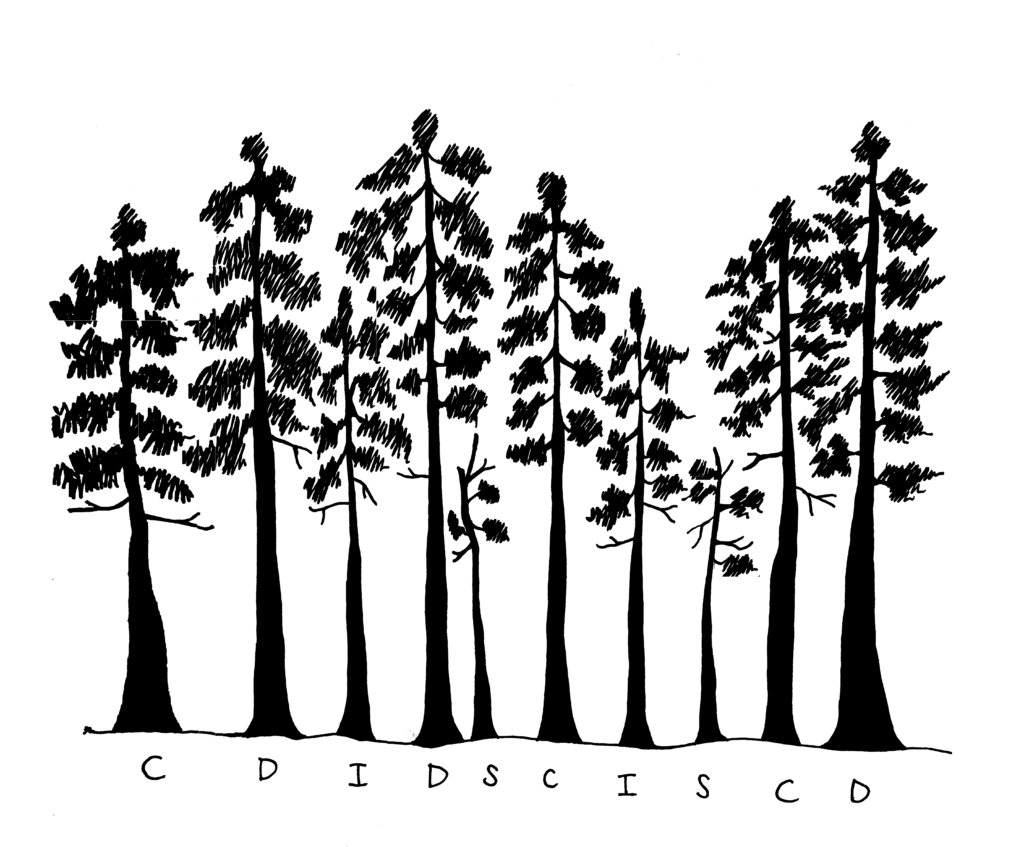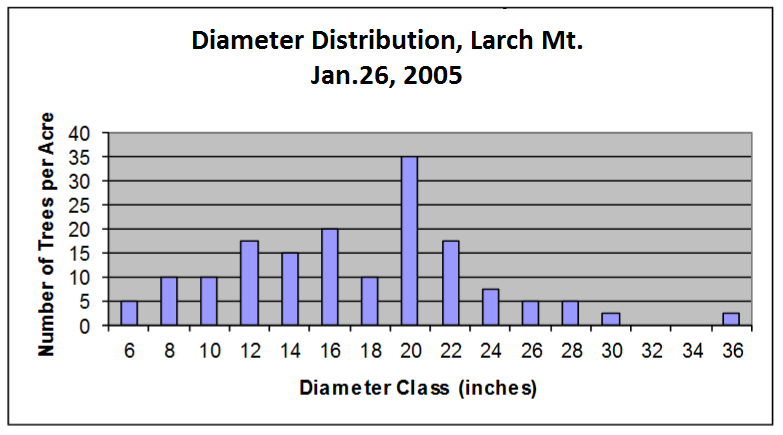5.2 Crown Classes
Crown class is a term used to describe the position of an individual tree in the forest canopy. In the definitions below, “general layer of the canopy” refers to the bulk of the tree crowns in the size class or cohort being examined. Crown classes are most easily determined in evenaged stands, as depicted in Figure 5.5. In an unevenaged stand, a tree’s crown would be compared to other trees in the same layer. Kraft’s Crown Classes are defined as follows (Smith et al. 1997 and Helms 1998 modified for clarity):
- Dominant trees These crowns extend above the general level of the canopy. They receive full light from above and some light from the sides. Generally, they have the largest, fullest crowns in the stand (Figure 5.5).
- Codominant trees These crowns make up the general level of the canopy. They receive direct light from above, but little or no light from the sides. Generally they are shorter than the dominant trees.
- Intermediate trees These crowns occupy a subordinate position in the canopy. They receive some direct light from above, but no direct light from the sides. Crowns are generally narrow and/or one-sided, and shorter than the dominant and codominant trees.
- Suppressed trees (Overtopped trees) These crowns are below the general level of the canopy. They receive no direct light. Crowns are generally short, sparse, and narrow.

Crown classes are a function of tree vigor, tree growing space, and access to sunlight. These in turn are influenced by stand density and species shade tolerance. A “suppressed” Douglas-fir tree is likely of low vigor and will probably die out. It typically would not be able to respond to an increase in sunlight if a neighboring tree fell over. A shade tolerant “suppressed” western hemlock on the other hand, may survive very nicely and be able to take advantage of increased sunlight if a neighboring tree were to fall over.
Crown class distribution can also infer overall vigor of an evenaged stand. If most trees are in the intermediate crown class, then the stand is likely too crowded and the trees are stagnated. A stand with nearly every tree in the dominant category is either very young, with all of the trees receiving plenty of sun, or very sparse and may be considered “understocked.” A typical evenaged stand has the majority of trees in the codominant class, and the fewest trees in the suppressed class. The relative ratios of dominant and intermediate classes are generally a function of species composition. Examine the data in Figure 5.6 and Table 5.2 below.

This 60 year-old stand of primarily Douglas-fir and western hemlock, displays a bell-shaped diameter distribution, characteristic of an evenaged stand. Most of the trees are clustered around the average DBH, with some smaller and some larger than the center range.
Table 5.1. Percent of each Species by Crown Class. Source: Data collected in evenaged stand near Larch Mt. by Mt. Hood Community College Forest Measurements I class in January, 2005. |
||||
|---|---|---|---|---|
| Species | Dominant | Codominant | Intermediate | Suppressed |
| 29% of all trees measured | 35% of all trees measured | 24% of all trees measured | 13% of all trees measured | |
| Douglas-fir | 67 | 64 | 40 | 12 |
| Western hemlock | 33 | 36 | 60 | 88 |
Note that the majority of trees are in the codominant crown class (35% of all trees), which is typical of an evenaged stand. These trees most likely make up the bulk of the 16’’-22” diameter classes. It is interesting to examine the species composition data. The majority of dominant and codominant trees are Douglas-fir, while the intermediate and suppressed trees are primarily shade tolerant western hemlock. Therefore, healthy trees in the small diameter classes (6-10 inches) may survive over time, even though they are surrounded by large trees. Crown class by itself does always reflect vigor; there is another element to examine besides position in the crown.

